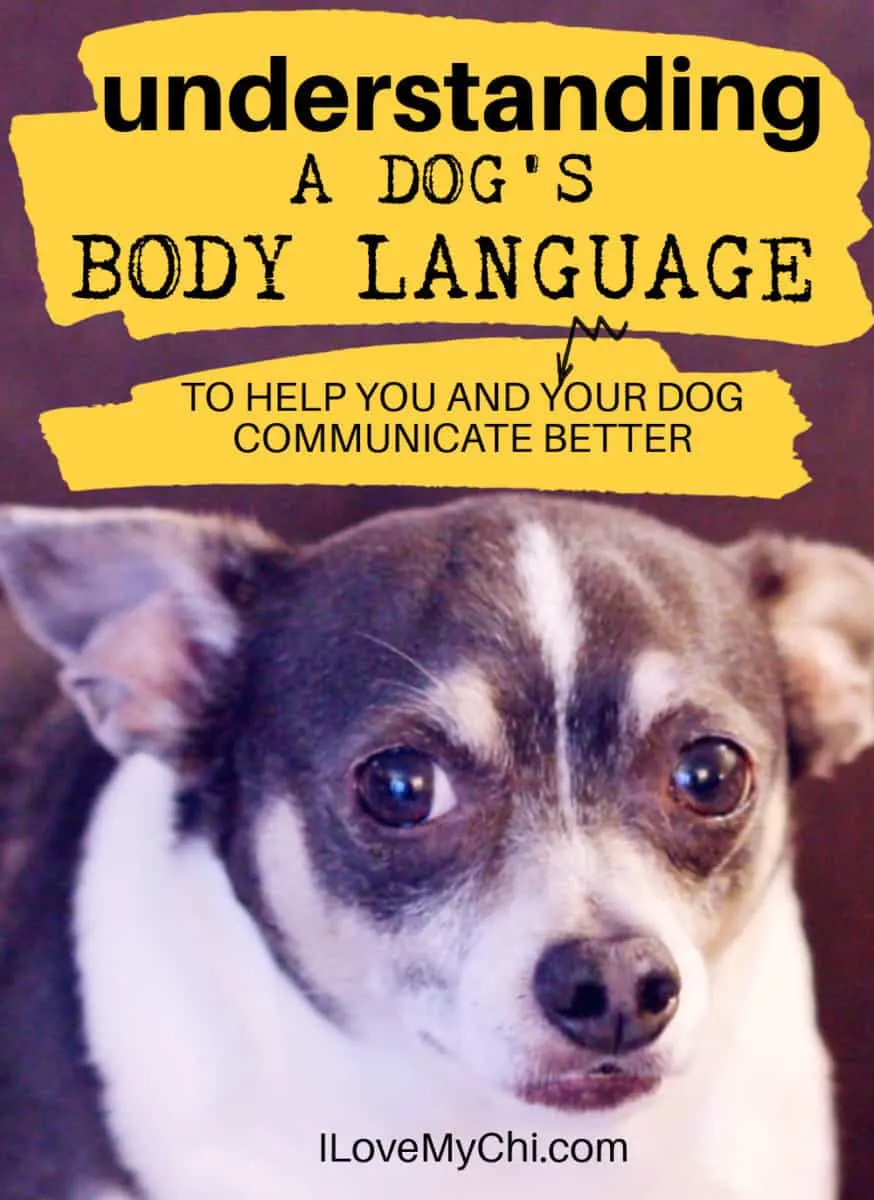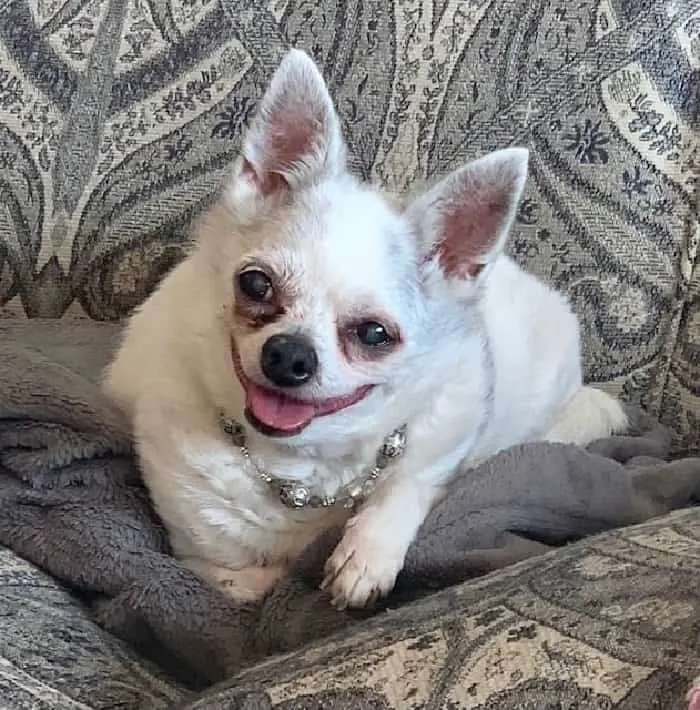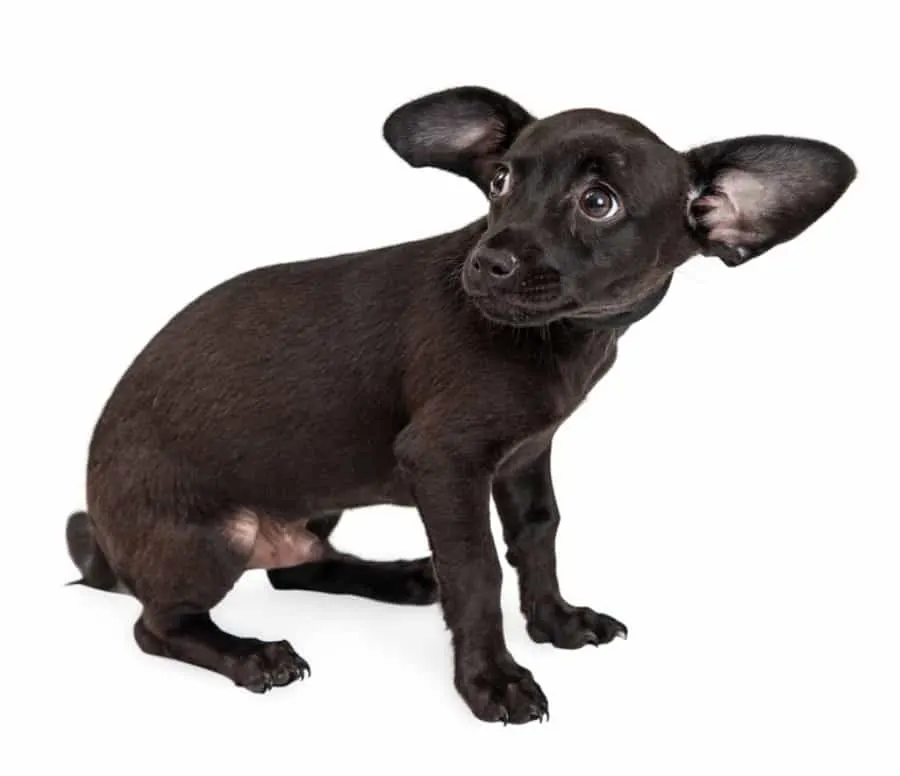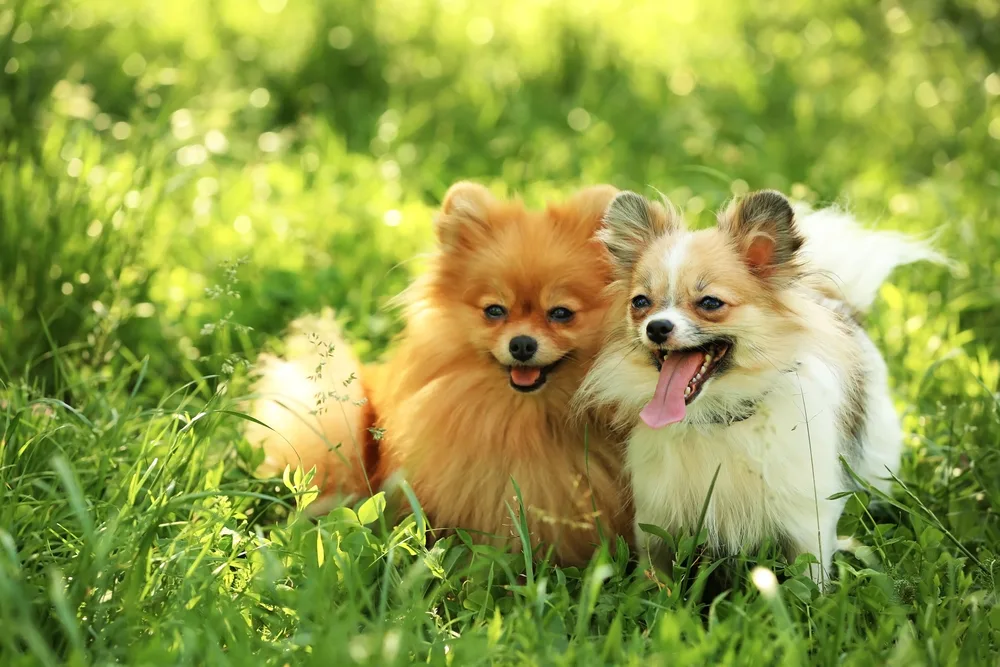Dogs convey significant information about their feelings just by their body language. Understanding a dog’s body language helps both pet parents and their dogs.

Although dogs can’t talk, their owners can still pick up clues on what’s going on in their minds just by reading their pet’s body language. Just like humans, dogs express feelings of contentment, sadness, fear, anxiety, and other emotions through their body movements and facial expressions.
It’s important owners recognize common nonverbal gestures so they can respond to the needs of their pets.
How Dogs Communicate with Their Eyes
The shape of a dog’s eyes can show what the animal is thinking. For example, the ASPCA website notes that a dog’s eyes will be their normal shape when the dog is happy and relaxed. Brightening eyes can mean a dog is friendly or wants to play. Eyes appearing larger than normal often show a dog is feeling threatened.
On the other hand, a dog’s eyes look smaller when they are stressed or afraid. Squinting eyes can signal pain or sickness. A fearful dog may have their pupils dilate, showing the whites of their eyes.
Although friendliness can be detected by a dog that looks directly at its owner’s eyes, sometimes a direct stare can also signal a threat. When this happens, don’t look at the dog, as doing so may trigger a challenge to the dog to defend itself.
A submissive dog may turn away from a gaze, hinting they are scared of past negative experiences with people who’ve abused them, or that he is recognizing you are the alpha.
How a Dog’s Ears Communicate
A frightened dog may have its ears back, while a calm dog has its ears relaxed. Because dogs have such an exceptional sense of hearing, they move and turn their ears to follow sounds.
Raised ears may be a sign of listening or showing acceptance. Ears that are thrown back can indicate submission but can also suggest fear. An alert dog raises his ears higher. When a dog is relaxing, he holds his ears naturally.
Dogs Communicating with Tails
Normally a dog’s tail hangs in a natural position, down to near the hock. Of course, various breeds have different tails. While some breeds have tails that curl, others have tails that tug between the back legs.
Usually, a dog that wags their tail is considered friendly. However, a wagging tail can also mean the dog is agitated or excited.
On the other hand, a slow-wagging tail that curves up and then down, as the letter “U,” indicates the dog is relaxed and playful.
How Dogs Read Humans
Dogs are also proficient at reading human body postures and facial expressions. Many pet parents have wondered if their dog was psychic. They probably aren’t but they are a master at reading body signals from their humans. They are much better at reading us than we are at reading them.
For example, an owner’s tone of voice can convey a mood or feeling. Human body language also “talks” to a dog.
Often a dog responds differently to an owner who displays sadness. A good sign that a dog understands is when it snuggles down next to a sad owner to give emotional support. I know if I’m sad all 4 of my fur babies are in my lap or attempting to kiss my face trying to make me feel better. And they do!
Dogs tend to be both fearful and aggressive and act more aggressively toward people who fear them. Just from observing a human’s demeanor, a dog can usually take advantage of the situation, such as a fearful, insecure dog that moves upon a fearful human and attacks.

Safety Tips: Understanding and Responding to Dog Body Language
Interpreting a dog’s body language is not only fascinating but also crucial for safety. By understanding what a dog is communicating, you can prevent misunderstandings and potential accidents. Here are some essential safety tips to keep in mind:
- Recognize Signs of Discomfort or Aggression: Dogs often show clear signs when they are uncomfortable or feeling aggressive. Look out for body language such as stiffening of the body, bared teeth, a lowered head, flattened ears, or a raised hackle. A growl is a clear warning sign that should always be taken seriously.
- Approach Dogs Appropriately: Never approach an unfamiliar dog without permission from its owner. When you do approach, do so calmly and let the dog come to you. Avoid direct eye contact initially, as dogs can perceive this as a threat.
- Teach Children How to Interact Safely: Children should learn to respect a dog’s space and not to approach, touch, or play with any dog without adult supervision. Teach them to recognize basic dog body language signs of happiness and discomfort.
- Don’t Disturb Dogs in Vulnerable Situations: Never disturb a dog that is eating, sleeping, or caring for puppies. Dogs in these situations are more likely to react defensively.
- Know How to React to an Aggressive Dog: If a dog appears aggressive, do not run or scream as this may trigger a chase response. Stand still, avoid eye contact, and keep your hands by your sides. Slowly back away when the dog loses interest.
- Understanding Fearful Dogs: A fearful dog might tuck its tail, crouch, lick its lips, or show the whites of its eyes. Give fearful dogs space and time to approach you on their terms.
- Be Aware of Your Own Body Language: Dogs are very sensitive to human body language. Fast movements, loud voices, and direct stares can be intimidating to a dog. Always use a calm and gentle tone when around dogs.
- Seek Professional Help if Needed: If you’re unsure about a dog’s behavior or if a dog shows consistent signs of aggression or fear, consult a professional dog trainer or behaviorist for advice.
By understanding and respecting a dog’s body language, we can create safer and more harmonious environments for both dogs and their human companions.
Responding to Dog Body Language
Understanding a dog’s body language is crucial, but knowing how to respond appropriately is equally important for ensuring the safety and comfort of both you and the dog. Here are some key strategies for responding to different types of canine body language:
Calming a Scared Dog
- Provide Space: A scared dog needs space. Avoid approaching it too quickly or directly, as this can increase its anxiety.
- Use a Gentle Tone: Speak in a soft, soothing voice to convey that you’re not a threat.
- Avoid Direct Eye Contact: Direct eye contact can be intimidating. Instead, use peripheral vision to keep an eye on the dog.
- Offer Treats: If the dog is not too frightened, gently toss treats towards it (without getting too close) to build trust.
- Use Calming Body Language: Sit or kneel sideways to the dog, avoiding looming over it. This non-threatening posture can help the dog feel more at ease.
- Allow the Dog to Approach You: Let the dog come to you on their own terms. This might take time, so be patient.
Safely Disengaging from an Aggressive Dog
- Stay Calm: Avoid panicking. Your calm demeanor can help de-escalate the situation.
- Do Not Make Sudden Movements: Sudden movements might provoke the dog. Move slowly and deliberately.
- Avoid Eye Contact: Like with scared dogs, avoid direct eye contact with an aggressive dog. It can be seen as a challenge.
- Position a Barrier if Possible: If there’s an object nearby, like a chair or a stick, gently place it between you and the dog as a barrier.
- Back Away Slowly: Slowly and calmly back away from the dog. Do not turn your back or run, as this might trigger a chase.
- Speak Softly or Remain Quiet: If you speak, do so softly. Sometimes it’s best to be quiet and not to engage with the dog verbally.
- Seek Safety: If the dog continues to be aggressive, seek safety behind a closed door or elevated area out of the dog’s reach.
In both scenarios, understanding and responding appropriately to a dog’s body language can significantly reduce risks and help manage the situation effectively.
Remember, each dog is an individual, and their responses can vary. When in doubt, especially in the case of aggression, it’s best to consult a professional dog trainer or behaviorist.
Conclusion
Once owners know how to interpret certain dog postures and facial expressions, they’ll be more attuned to their pet’s motivations and feelings. As a result, pet parents can better interact with their best friends, enjoying their pets more. Even more important, being aware of a dog’s body language can help ensure a pet’s safety.
How good are you at reading your dog’s body language? Has there ever been a time when noticing your dog’s body language helped you in any way? Tell us about it in the comments!
Also Read:
Why your chihuahua stares at you
Rewarding your dog’s good behavior
If your dog isn’t listening to you
Ways chihuahuas communicate with their owners


Cathy Bendzunas
Pet Blogger





Danielle
Wednesday 4th of August 2021
My dog, Lucky, and I, 'read' each other very well. He always knows what I'm feeling, and I always know what he's feeling! Lucky's very verbal, too, so it's a little easier to understand him. 😅
Christina DiBlase
Monday 12th of July 2021
Great post! Thank you I grew up With a evaluation by a professional dog trainer you take the guesswork out of why your dog is behaving the way they are so that you can better understand them and get the help you need. Once you’ve gotten that help you can really start enjoying your relationship with your dog just as you imagined it would be so that you can proudly and confidently include them in your daily activities without worrying about them behaving badly. If you need a dog trainer and dog behaviorist reach us fast by PHONE +1 570-575-8504 | https://doggonehappytraining.com where we can talk live about your needs. However, you're welcomed to message us using our Contact Form on the Contact page. https://doggonehappytraining.com | https://youtu.be/t_I3bYKTHYE | https://www.instagram.com/doggonehappytraining/
Kathleen
Thursday 13th of May 2021
I just got 2 chis There twins a boy and a girl There 2months old.
Cathy
Thursday 13th of May 2021
I bet they are adorable Kathleen!
Carol
Saturday 1st of May 2021
Same here ! My honey does me that way.i like to know why too.
Paul Bennett
Saturday 1st of May 2021
Why do my chi stare at only me and nobody else
Cathy
Saturday 1st of May 2021
Chis stare for 2 reasons and they are kind of opposite reasons. One is that they are challenging the person they or animal they are staring at. The other is they love and adore you and are watching for any body language signals from you.